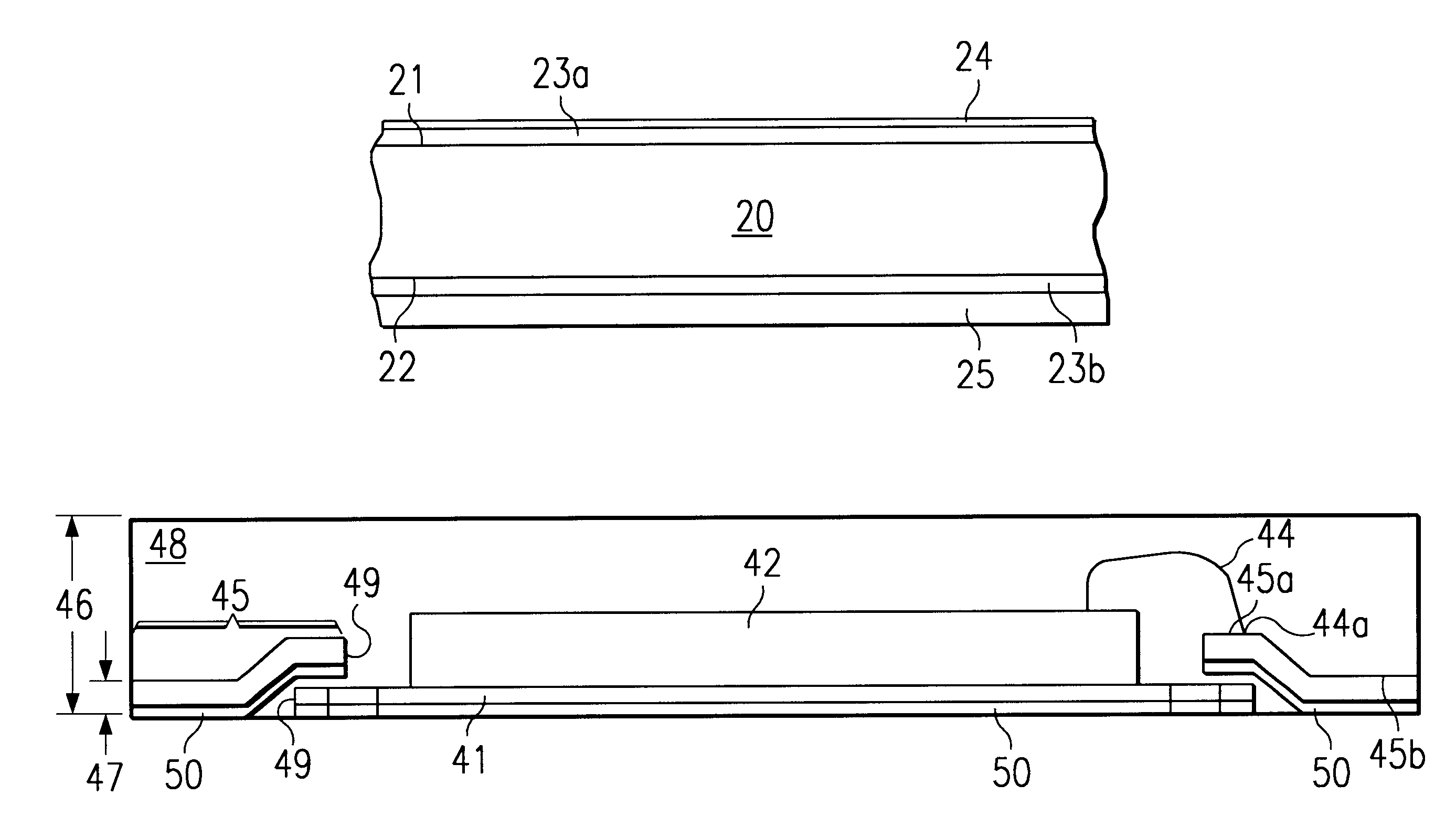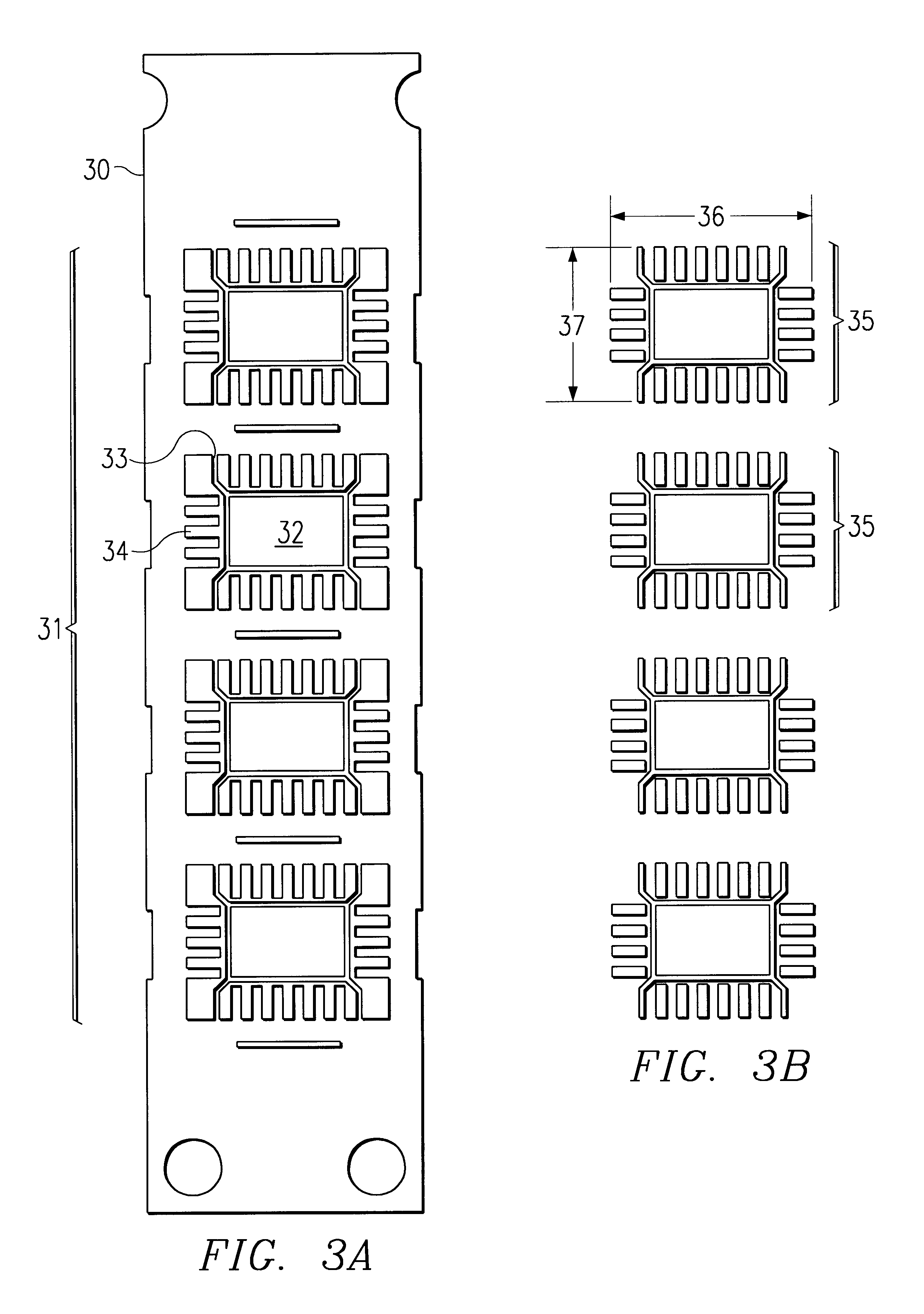Preplating of semiconductor small outline no-lead leadframes
a semiconductor and leadframe technology, applied in the field of semiconductor devices and processes, can solve the problems of tolerance limits, serious jeopardizing good adhesion, and inability to fine-pitch devices to solder dipping, and achieve the effect of enhancing adhesion to molding compounds
- Summary
- Abstract
- Description
- Claims
- Application Information
AI Technical Summary
Benefits of technology
Problems solved by technology
Method used
Image
Examples
first embodiment
In the invention, depicted in FIGS. 1A and 1B, a layer of nickel is deposited onto both the first surface 11 of the base metal 10 (layer designated 13a in FIG. 1A) and the second opposite surface 12 (layer designated 13b in FIG. 1A). The nickel is flood plated so that both layers 13a and 13b have the same thickness in the range from about 0.5 to 3.0 μm.
Next, the nickel 13b covering the second surface 12 is protected by a simple mask covering the total surface of the sheet; then, a layer 14 of bondable metal is plated onto nickel layer 13a on the first surface 11 (see FIG. 1B). Palladium is the preferred choice for the bondable metal because of its added benefit of promoting good adhesion to molding compounds. Palladium layer 14 is thin and has only a thickness in the range from about 20 to 60 nm, but it ensures reliable bonding wire attachment (stitch bond, wedge bonds, and ball bonds). Need 1) of the above requirements is thus fulfilled.
Finally, the palladium layer 14 is protected ...
second embodiment
In the invention, depicted in FIGS. 2A and 2B, a continuous strip of sheet-like base metal 20, having first surface 21 and second opposite surface 22, is selected from a group consisting of copper, copper alloy, brass, aluminum, iron-nickel alloy, and invar. A layer of nickel is deposited onto both the first surface 21 of the base metal 20 (layer designated 23a in FIG. 2A) and the second opposite surface 22 (layer designated 23b in FIG. 2A). Layer thickness is in the range from about 0.5 to 3.0 μ.
Next, the nickel 23b covering the second surface 22 is protected by a simple mask; then, a layer 24 of bondable metal is plated onto nickel layer 23a on the first surface 21 (see FIG. 2B). Palladium in the range from about 20 to 60 nm thick is the preferred choice. It ensures reliable bonding wire attachment and good adhesion to molding compounds.
Finally, the palladium layer 24 is protected by a simple mask. A layer 25 of lead-free solder is plated onto nickel layer 23b on the second surfac...
PUM
| Property | Measurement | Unit |
|---|---|---|
| Fraction | aaaaa | aaaaa |
| Fraction | aaaaa | aaaaa |
| Thickness | aaaaa | aaaaa |
Abstract
Description
Claims
Application Information
 Login to View More
Login to View More - R&D
- Intellectual Property
- Life Sciences
- Materials
- Tech Scout
- Unparalleled Data Quality
- Higher Quality Content
- 60% Fewer Hallucinations
Browse by: Latest US Patents, China's latest patents, Technical Efficacy Thesaurus, Application Domain, Technology Topic, Popular Technical Reports.
© 2025 PatSnap. All rights reserved.Legal|Privacy policy|Modern Slavery Act Transparency Statement|Sitemap|About US| Contact US: help@patsnap.com



